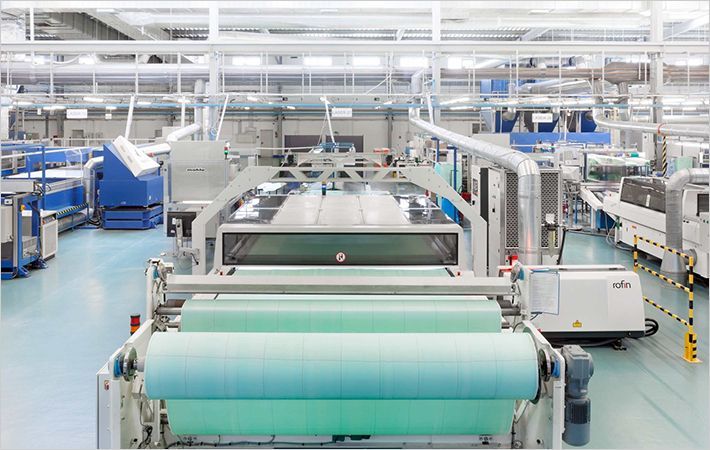At the European Coatings Show from March 19 to 21, 2013, in Nuremberg, Bayer MaterialScience will present a technology for heat-activated dispersion adhesives that is based on the new polycarbodiimide crosslinker Desmodur XP 2802.
This technology particularly offers advantages for applications in which web-like substrates must be bonded together and quickly achieve high strength at the joint. “Roll-to-roll bonding processes in the packaging and textile industries can benefit from this technology most of all,” says adhesive raw materials expert Jörg Büchner of Bayer MaterialScience.At the European Coatings Show from March 19 to 21, 2013, in Nuremberg, Bayer MaterialScience will present a technology for heat-activated dispersion adhesives that is based on the new #
Polyurethane adhesive dispersions usually are processed with isocyanate crosslinkers. However, formulations containing the new polycarbodiimide crosslinker display two unique properties that could not be combined when using isocyanate crosslinkers: first, the reactive formulations display high storage stability and are suitable for use for several months.
If Dispercoll U 2824 XP, for example, is used as the polyurethane dispersion, pot lives of six months can be achieved. “We developed this dispersion specifically to be combined with the polycarbodiimide crosslinker,” Büchner says. Second, the crosslinking reaction takes place immediately after drying in the adhesive layer at room temperature and a high rate. This makes it possible to further process bonded parts almost immediately.
The experts at Bayer MaterialScience have studied the viscoelastic properties of the adhesive polymers before and after crosslinking and determined the heat resistance of the resulting bonds. If the crosslinking components are added correctly, crosslinking with Desmodur XP 2802 results in very durable bonds even if the adhesive dispersion has been in storage for several months.
The bonding process involves the following steps: the polymer in Dispercoll U 2824 XP and the polycarbodiimide crosslinker in Desmodur XP 2802 are both present in the adhesive dispersion as separate droplets. After the formulation is applied to a film or other substrate, the adhesive layer is dried. During drying, the polymer and crosslinker droplets gradually come closer, until they finally flow into one another and form a uniform adhesive film.
Film formation triggers the start of the crosslinking reaction. If the adhesive layer cools prior to the bonding process, the polymer crystallizes in just a few minutes, forming a non-sticky polymer film. To bond two films or other substrates with it, it must be activated within one hour. This is achieved by briefly applying heat, which melts the crystalline segments in the polymer chain.
After the substrates are pressed together, the adhesive quickly hardens at room temperature by means of both crystallization of the polymer's crystalline segments and the crosslinking reaction between the polymer and the polycarbodiimide crosslinker.
About Bayer MaterialScience:
With 2011 sales of EUR 10.8 billion, Bayer MaterialScience is among the world's largest polymer companies. Business activities are focused on the manufacture of high-tech polymer materials and the development of innovative solutions for products used in many areas of daily life.
The main segments served are the automotive, electrical and electronics, construction and the sports and leisure industries. At the end of 2011, Bayer MaterialScience had 30 production sites and employed approximately 14,800 people around the globe. Bayer MaterialScience is a Bayer Group company.
Bayer

